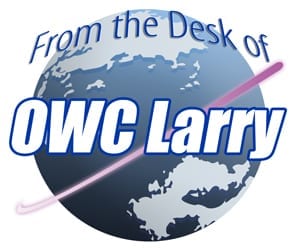 Ever since Thunderbolt was introduced last year, we’ve had users asking for that interface on OWC and Newer Technology drives. Not only that—but with FireWire 800 and USB present too. Thunderbolt is truly a remarkable interface that opens a lot of expansion options, and users typically cite speed, power, and flexibility as the forces that make the product great. To paraphrase though, ‘with great power comes greater complexity’. This complexity is both in the implementation of Thunderbolt as well as considerations for when Thunderbolt is truly the ideal solution.
Ever since Thunderbolt was introduced last year, we’ve had users asking for that interface on OWC and Newer Technology drives. Not only that—but with FireWire 800 and USB present too. Thunderbolt is truly a remarkable interface that opens a lot of expansion options, and users typically cite speed, power, and flexibility as the forces that make the product great. To paraphrase though, ‘with great power comes greater complexity’. This complexity is both in the implementation of Thunderbolt as well as considerations for when Thunderbolt is truly the ideal solution.
Speed
One of the most common requests for Thunderbolt is because of its speed. Thunderbolt can run at up 10Gbps for a theoretical sustained data rate of over 1GB (1000MB) per second. In the real world, 650-800MB/s is the reality and that translates equivalently into the largest file a 4.7GB DVD can hold, about 2000 8MP photos (like from an iPhone 4 or 5), or 2 hours of compressed 1080P HD video being read or written in less than eight seconds. In reality, few solutions outside something like our Helios PCIe Thunderbolt Chassis/Accelsior SSD Solution come even close to providing this level of performance.
How does Thunderbolt compare to other interfaces?
USB 2.0, a standard interface on Macs for the past decade, is rated at 480Mbit (0.48Gbps), and in the real world is typically in the realm of 35-40MB/s – reading or writing that same 4.7GB DVD size file in about 120 seconds.
FireWire 800 has been standard on Mac Pros, iMacs, and MacBook Pros for many years now with the exception of the 2012 MacBook Pro which dropped this interface and MacBook Air which never had. FireWire 800 is an extremely well-designed, highly-efficient interface rated for 800Mbps (0.8Gbps) that in the real world is capable of data rates of 80-90MB/s and transferring that DVD sized file in about 55 seconds.
USB 3.0 is the newcomer to the Mac space. It’s been available via a third party adapter for Mac since early 2011, but was only just included as a standard port on the latest 2012 MacBook Pro models (where FW800 was dropped) as well as the 2012 MacBook Air models. USB 3.0 is rated for up to 5Gbps with typical real world capability approaching 400MB/s – that same DVD file bit in less than 14 seconds.
That is what the interfaces can provide in terms of speed and that’s not even half the story.
The primary limiting factor in storage performance are the drive mechanisms/devices being interfaced.
Unlike SSD solutions such as the aforementioned Helios/Accelsior bundle, single and dual hard drive solutions that are limited by USB 2.0 – perform reasonably optimal via FireWire 800 – and are not limited at all by either USB 3.0 or Thunderbolt.
Although you can get peak drive data rates with certain data capture functions, large file copies, and drive cloning – more typical back-up function and support file sets are far smaller file/file transfer sets where there is both drive overhead and system processing that makes the actual data rates much lower. There are few situations where FireWire 800 doesn’t offer a huge benefit vs. USB 2.0… but FireWire 800 vs. USB 3.0 feels a lot closer than one might think for common uses. The same single hard drive external solution compared USB 3 vs.Thunderbolt – and there is no difference to speak of. To see some actual numbers on this point, check out our speed performance benchmark testing of both interfaces on the Buffalo MiniStation.
In other words, it doesn’t matter if you’re hauling with the capacity of a 40’ container or a pickup truck bed if what you’re hauling fits just fine in the pickup. Your data is getting there all the same and just as fast—you’re just paying for a lot more ‘empty space’ or unused bandwidth when you’ve got the capacity of an 18 wheel hauler that may not actually be getting used.
Consider your interface options and what you need for performance. Getting a Thunderbolt solution for the sake of it isn’t necessarily giving you a benefit. If you have a 2011 MacBook Air that leaves you between Thunderbolt and USB 2.0 – A Thunderbolt to FireWire 800 Adapter (Apple, $29) may be a great option. Further, if more than FireWire 800 is needed and you don’t have one of the new MacBook Pros with USB 3.0 – using a Thunderbolt to eSATA Adapter (Lacie, $199) not only brings you up to 3Gbps (which is more than the peak of single and dual hard drive solutions) – but gives you great flexibility to use many existing, multi-interface solutions that offer FireWire, USB, and the eSATA so you can use them with other Mac and PC systems as well.
Thunderbolt is an exceptional interface… and for higher end storage solutions, you’ll certainly see a benefit with Thunderbolt starting with four drive RAIDs and especially so with six drives and up…but even that depends on the application. For most users though, that’s overkill. They’re more for professional applications, such as large Video, Audio, or Graphics workstations that transfer a lot of data.
But speaking of professional users noted above, we do offer that solution that makes Thunderbolt unbeatable. How would you like having “lethal” performance from your 2011 and later iMac, Mac mini, or Mac notebook? Benchmarking expert Barefeats.com combined our Helios PCIe expansion chassis with our Accelsior SSD with speed results that matched their fastest tested for Thunderbolt.
Power
Significant portions of the Thunderbolt products requested include bus-powered portables. Here, both FireWire and USB 3.0 have a huge advantage. By not requiring Thunderbolt’s active connecting cable, USB 3.0 and FireWire overall consume substantially less power. This allows for higher performance SSD and even dual-drive solutions that the current Thunderbolt implementation can’t support via bus-power. In the case of USB 3.0 equipped Macs, if you have a device like the Buffalo MiniStation with both USB 3.0 and Thunderbolt support, you’re not losing performance and you are gaining battery life by using the USB 3.0 interface.
Flexibility
The other feature of Thunderbolt that entices many is its flexibility. Thunderbolt allows you to attach your displays, drives, and even breakout boxes for utilizing expansion cards, all via a single interface. This flexibility in diversity though does reduce the flexibility of the actual devices. With some exception, most Thunderbolt devices are Thunderbolt only and thus not for use on Macs without Thunderbolt. FireWire 800, USB, and even eSATA equipped solutions may be directly used on most any Mac or PC and/or even via Thunderbolt with available adapters. Thunderbolt can bus-power a drive – but only a single hard drive that is the last drive in the chain. Bus-powered drives do not have pass-through Thunderbolt ports because of this. No more than one bus-powered Thunderbolt drive or device per chain (no different really than use of bus-power via any interface actually).
Summary
So what are we saying? Review your needs and consider the solutions and options there best suited to your needs. Thunderbolt is a great interface, and has a lot going for it, especially in terms of expansion. It’s daisy-chainable (except bus-powered Thunderbolt devices), is a solution for PCIe expansion boxes, A/V, Display, Storage and high-end storage, pretty much anything you could do in a 2X PCIe 2.0 slot but – depending on your storage needs/application, it’s worth taking a look at the options. All said though, it doesn’t negate or even obsolete other interfaces for storage.
Excluding the Mac Pro (which has PCIe slots anyway – but still long overdue for its model update none the less), all current Macs have been shipping with Thunderbolt for over a year now. The latest 2012 MacBook Pro and MacBook Air models all have USB 3.0 and Thunderbolt. The current Mac mini and iMac models (which were introduced in July and May of 2011), as well as the prior MacBook Pro 2011 Models, are all equipped with Thunderbolt, USB 2.0, and FireWire 800. The prior generation of 2011 MacBook Air has Thunderbolt and USB 2.0 – and you can use that Apple adapter mentioned earlier to add FireWire 800.
I personally believe that if USB 3.0 had been rolled out on every new Mac along with Thunderbolt last year, I wouldn’t even be writing this. All said, there are many different needs as well as solution and interface options to address those needs. All should be considered. We’re here to help and further, you can count on an ever growing line-up of Thunderbolt based solutions – as well as the other interface models – to be in our line-up to meet your needs.
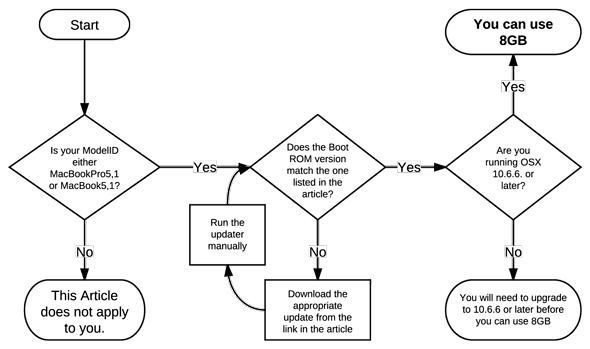
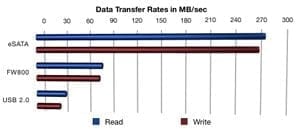
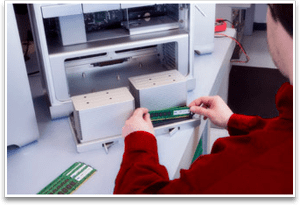
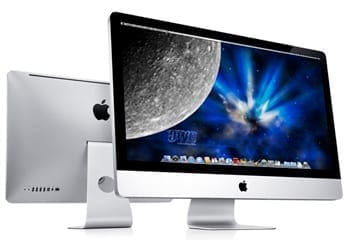
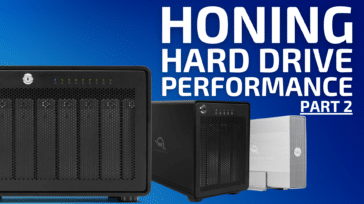
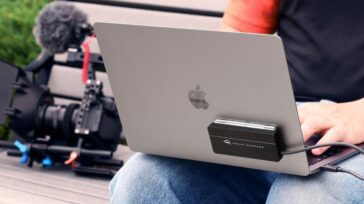
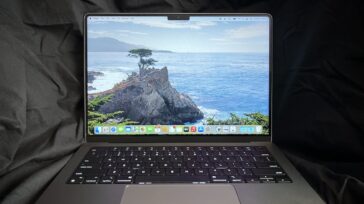
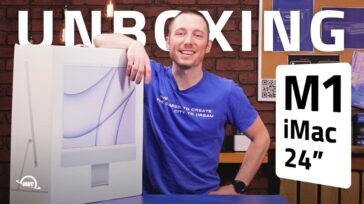


Is OWC still working on developing the OWC Mercury On-The-Go-Pro Thunderbolt SSD’s as mentioned on this page?: http://eshop.macsales.com/shop/Thunderbolt/external-drives/portable/On-The-Go
I see a 1TB spinning hard disk Thunderbolt drive is available:
http://eshop.macsales.com/item/Other%20World%20Computing/MOTGTBH5T1.0/
Will SSD models be announced soon as well?
We are working on it, however, qualification is tricky with SSDs due to power consumption requirements. Be sure to bookmark the OWC Blog for any future announcements. Thanks!
Will do. Hope OWC can ship a Thunderbolt SSD soon. Looking forward to making an external Fusion Drive with my Mid 2011 iMac.
Oh yes, I see that the power usage of the 240GB Mercury Extreme Pro 6G SSD is twice that or more of the Western Digital Scorpio Blue mechanism found in the 1.0TB OWC Mercury On-The-Go Thunderbolt-equipped 5400RPM 8MB Cache Portable SATA 2.5″ based Solution
Power usage of the Western Digital Scorpio Blue mechanism in the 1.0TB OWC Mercury On-The-Go Thunderbolt-equipped 5400RPM 8MB Cache Portable SATA 2.5″ based Solution is:
Read: 1.4 Watts
Write: 1.4 Watts
Idle Mode: 0.59 Watts
Standby Mode: 0.18 Watts
Sleep Mode: 0.18 Watts
Whereas the power usage of the 240GB Mercury Extreme Pro 6G SSD is
Read: 3 Watts
Write: 4.5 Watts
Idle Mode: 1 Watt
I hope Other World Computing can attain the full 559MB/s sustained reads, and 527MB/s sustained writes of the 240GB Mercury Extreme Pro 6G SSD thru the Thunderbolt enclosure.
isn’t the maximum current draw for the Thunderbolt standard 9.9 Watts? Seems adequate for the 4.5 Watt writes.
There is power draw from the Thunderbolt chipset and the Thunderbolt cable as well. Also – while the current generation of cables are more power efficient, the power use allowance has to take into account the original gen cables.
We believe we have a solution that is the best practice and with the most potential to delivery high-performance bus-powered Thunderbolt SSDs. Working diligently on this. :)
Still waiting for an OWC Mercury 6G SSD Thunderbolt external drive to use as a Fusion drive with my iMac’s internal HDD. Is OWC still working on a Mercury 6G Thunderbolt SSD?
Hi Ken, yes we still are. Thanks!
Thanks for the reply, OWC Jarrod. Can’t wait to connect some OWC SSD goodness to my mid-2011 Thunderbolt equipped iMac. :)
Now that it’s 2015, is Other World Computing still working on Fast OWC Mercury On-The-Go Pro Thunderbolt connected SSD’s?
It’s been a year, still waiting for a good Thunderbolt connected SSD solution.
I see that barefeats installed a Mercury Extreme Pro 6Gbps SSD into a OWC Mercury On-The-Go Pro HDD enclosure and it was the “best performing SINGLE drive bus-powered Thunderbolt enclosure overall. CAVEAT: If you open the case to replace the HDD with an SSD (including OWC’s), the warranty is voided.”
I will buy a OWC certified Mercury On-The-Go Pro SSD as soon as you release it. It need not be bus powered either, but if it is please make it turn on and off with the computer, as I will be using it to create a custom fusion drive. If Rob Art Morgan of barefeats.com can put together a single drive OWC Thunderbolt SSD that is the fastest he’s tested, why isn’t one for sale directly from macsales.com?
YES!!!:
http://eshop.macsales.com/shop/Thunderbolt/external-drives/portable/On-The-Go
exactly what I’ve been waiting for: OWC Mercury EXTREME Pro 6G SSD in a Thunderbolt enclosure.
Any timetable as to when we can expect these to be shipping other than “coming soon?” By end of quarter 1 2014?
I hope Other World Computing is working on a Fusion Drive compatible Thunderbolt version of the Elite Pro mini SSD.
We’re actually working on something we believe to be far better and much further reaching / not so narrow. Everything in time – but you’ll see something a little different than expected within the next 4-8 weeks.
Excellent! Thanks for the info OWC Larry. Can’t wait to see what OWC has been working on!
The Mercury Helios+E2 looks impressive! 600+MB/s reads and 550+MB/s writes, auto-on/off with Thunderbolt port, hot-pluggable, variable speed fan… excellent!! The only problem is I can’t afford $829.99 for the 240GB capacity I would like to have. I hope OWC is working on a Thunderbolt version of the Mercury Elite Pro mini. At ~500MB/s read/write a 240GB M.E.P.mini with auto-on/off priced below $400 would have me pulling out the credit card to place a purchase post haste.
This is exactly what I’d like to purchase from Other World Computing: Just place OWC’s reliable SandForce driven 240GB OWCSSDMX6G240T Mercury EXTREME Pro 6G SSD into a OWC 2.5″ Thunderbolt bus-powered enclosure and I’ll buy it.
Hi there, this is an awesome thread with lots of feedback by the OWC folks. It’s definitely telling that so many companies are having to ask their customers to be patient for Thunderbolt devices. I’ve seen the exact same thing regarding things like hdmi to thunderbolt adapters (e.g. for using a Thunderbolt display as a TV). In any case, it’s abundantly clear to me that it’s the Thunderbolt oracles’ (i.e. Apple and Intel) pointless secrecy that is preventing any sort of reasoned discussion of the technical issues and certifications involved.
Okay, with that said, here’s my Thunderbolt wish: super simple 6-bay 3.5-inch SATA III disk chassis with no hardware raid (so JBOD, I guess). It should obviously have two Thunderbolt ports and one or more USB 3.0 ports (also firewire 800 would be nice, but not worth it if it’s too hard to do). I’d use it with either the Mac OS X standard software raid, or ideally ZFS RAIDZ2. Needless to say, it should support any old brand of 4TB drives or greater.
Price can be whatever. At this point I would just throw money at you until you told me to stop. Thanks. :)
So where is all this at now that we’re in 2013? Because I own a tin of OWC enclosures & drives and, having read through everything above, the redux I come up with from OWC is frankly not much more than excuses for why there are now OWC thunderbolt products. I understand that there is a time-to-market issue, but that ship has long sailed. So what’s the problem? It doesn’t help that the attitude in everything I’m reading from OWC is this: “Thunderbolt is awesome. But you don’t really need it, and here are the stats to prove it. Use our USB 3 bridge product. Now THAT’s an awesome product!” Guys. Speed isn’t the issue people are clamoring for here. There’s plenty in Thunderbolt. It’s the ability to go forward with OWC products on new Macs. Plus, it’s not your place to judge whether or not your users really need Thunderbolt speeds. Users want what they want. I just last week purchased my last OWC product until you institute Thunderbolt. Simple as that. My next drive will be LaCie or G-Tech. I prefer OWC enclosures with Hitachi drives, but I prefer more moving forward with tech that Apple institutes on their latest machines, because I need the speed that those latest machines provide. Video, audio, both at the same time, whatever. I also just purchased the Lacie e-Sata Thunderbolt bridge. And that’s the last one of THOSE I will buy. Too expensive & bulky for what it is, (especially bulky). Get on the Thunderbolt train. All your products. Plus USB 3. With a 2nd Thunderbolt connector for chaining and, if possible and the spec allows it, a 2nd USB 3 connector for chaining as well. Stop making excuses for not having the products. Get them out there.
I believe our CEO, OWC Larry, answered this best on another of our blog articles:
http://blog.macsales.com/14743-for-most-users-usb-3-0-fulfills-need-for-speed/comment-page-1#comment-61025
But in short, we are working diligently on bringing more OWC brand Thunderbolt offerings to market and we’re as anxious as everyone else to add them to our lineup.
Larry & team,
Thanks for the helpful article.
I join the chorus asking for an OWC Thunderbolt storage solution with up to 6 bays (e.g. Elite Pro 4 bay w/ Thunderbolt).
I think I speak for many people when the technical details are far less important (eSata vs USB 3 vs Thunderbolt vs throughput, etc etc) than the comfort of future compatibility.
I’m frustrated trying to plan for the next 5 years because it seems like the products do not yet exist.
The general consensus is that a Mac Mini Server with two unicorns is the way to go.
Cheers,
Frank
A Mercury EXTREME Pro 6G mini Thunderbolt version to use as a Fusion Drive would be nice.
I am trying to decide about a server upgrade for my photo studio. I currently use a C2D MacMini running SLS (SnowLeopardServer) and have FW800 daisychained two OWC QX2 4bay enclosures (12TBs/ea) + two voyagerQ single 3TB drives for offsite bu. It all works better than I thought it would but starting to see slowdown saving files over the network.(Some machines like the MP’s having a harder time of it than the new iMacs.
In any case, am debating whether to convert a 2.8GHz Quad MP to a new server or buying a new MacMini with Thunderbolt.
The old MP has advantages like eSATA capability which will give me more speed and thruput to my raids and it also has two gigabit ports which I think I can double thruput to the switch.
New MacMini with thunderbolt has faster newer processor and thunderbolt, of course, but would require upgrade to new thunderbolt raid enclosures…and would it deliver more thruput?? I dont know
Thunderbolt/Mini/Server vs MacPro works with existing eSATA QX2 enclosures and has (2) gigabit nic ports….what do you think?
I’ll be buying an Other World Computing Mercury EXTREME Pro 6G mini 240GB dual Thunderbolt port version soon after it exists. Looking forward to the 559MB/s Sustained Reads & 527MB/s Sustained Writes of the internal 240GB Mercury EXTREME Pro 6G SSD version plugged externally into my Thunderbolt equipped iMac.
I’m waiting for a 2 disk Elite pro with thunderbolt. It’s not really the speed thing, it the flexibility and future proofing. If I have an external drive that has USB3, firewire 800 (I currently use for external drives) and thunderbolt, I’m in the driver seat with whatever Apple decides to change on the Macs in the future.
Any chance on a thunderbolt to USB 3 adapter?
Like most other questions regarding potential products (and Thunderbolt items in particular) we really can’t comment on anything that may or may not be in the pipeline. All we can suggest you keep an eye out here on the OWC Blog, as we announce the products here as soon as they’re released.
Likely by Christmas… and likely will be requiring 10.8 or later….
Great to hear that a Thunderbolt to USB 3.0 solution is underway. I really hope it is a pass thru device with two thunderbolt ports, as all the 21″ imac and the majority (if not all) of the macbooks pro and macbook air’s only have one as well. (I think the mac mini also only has one thunderbolt port….)
An ideal solution for me would be to “upgrade” my 2011 imac with a thunderbolt SSD boot drive for max speed, and then chain a thunderbolt to USB adapter to drive some spinning traditional hard drives for more general purpose storage.
USB 3.0 and Thunderbolt capable Elite Pro Dual Mini please :)
Don’t worry, even though it feels like it’ll be an eternity before they arrive, OWC Thunderbolt drives are coming…
Great to hear for someone in the market for a high-speed on-the-go video/photo editing solution! Looking forward to it!
Forgot to ask…. I’ve seen that other RAID manufacturers have added Thunderbolt to their current products. The two products could be completely identical (drive speed and capacity) yet the Thunderbolt enabled devices are $200-$300 more expensive. Hopefully this won’t be true for OWC products. I’ve heard that a USB 3.0 chip costs around $7 where a Thunderbolt chip costs upwards of $30. What am I missing to explain this substantial price jump?
I would hazard a guess that just adding the chip is only part of the cost difference. I’m not really involved in development here (and not at all elsewhere, obviously) but I would think that there’s other costs involved (such as licensing, retooling, etc.) that also need to be accounted for. Plus, there’s that whole pesky “supply and demand” thing to consider, too. Once more Thunderbolt devices come out and they all get “established”, it stands to reason prices will drop over time.
There are plenty of cost adders well beyond just the chipsets. That being said – we will be competitive in this arena when we enter and with a better built product as well.
Sounds good! Can’t wait!
Thanks for the informative article.
Other reviews have found differences in HDD being Thunderbolt faster than FireWire 800 and even USB 3.
In any case, choice is good. If possible, please bring both the Mercury Elite Pro (4 TB or larger when available, 7200 RPM) and Mercury Elite mini (750 GB or larger when available, 7200 RPM) with 2 x Thunderbolt and USB 3. That is the future and Apple has showed that clearly. Thanks!
The problem with most reviews these days – they focus heavily on benchmarks vs. real world application testing.
I could be wrong, and probably am, but posts like this come across like an apology that ThunderBolt isn’t yet offered on devices like the QX2. Stunning that this option still doesn’t exist, no matter how many analogies to pickup-trucks vs semi-trailers we are given . . .
“Apology” probably isn’t the right word; it’s really more of an explanation of options. While there is a fairly sizable group of those who have Thunderbolt, but no USB 3.0 (namely, most users of 2011 Macs), there is also a large subset that can utilize other options until Thunderbolt is more widely available.
Don’t get me wrong; OWC Thunderbolt drives are coming. Unfortunately, it’s not just a simple matter of just adding a Thunderbolt port – there’s a lot more involved in the process, much of which we can’t talk about for legal reasons. The relative dearth of Thunderbolt drives on the market in general is a reflection of that; if it was a simple matter to implement, there would be a lot more devices available across the board than there are now. Sure, there are some available, but not in the quantities one may expect.
I recommend you read Larry’s comments regarding Thunderbolt availability in the above-linked article. He really explains where we are in the process.
Yes, I hear you.
No one, not even me, has claimed it is a simple process to add Thunderbolt to drives, and yes, regular readers, me included, have already read Larry’s comments. That’s why this post is just more of the same.
It’s just frustrating to continue to have to wait to upgrade products like my QX2 that doesn’t even offer USB 3.0 (a perfect product to need high speed data transfer) while “Helios” options are presented.
I understand and respect that – the road is effectively a long one and still being paved at that. We don have solutions for the current hardware ourselves and/or recommended to bridge the near term. FWIW, the cost and flexibility of these solutions make them very practical as well.
To use ANY of our eSATA equipped external drives, including the QX2, via USB3 – this $25 adapter is all you need to unleash that performance:
http://eshop.macsales.com/item/NewerTech/ADESATAUSB3/
For those with Thunderbolt, but with a Mac has only USB 2.0 or FireWire 800, and want that higher performance – The Lacie eSATA Thunderbolt hub is a great option:
http://eshop.macsales.com/item/Lacie/9000186/
These allow the use of existing drives you may already own as well as any of our drives with eSATA. The flexibility maintained with the multi-interface too for use of these solutions with other non-TB Macs and PCs too.
I can’t say today if we’re going to have FireWire and eSATA on future Thunderbolt solutions. Bridging with USB 3.0 interface (and Thunderbolt on same solution) is exceptionally easy and you can count on this being our norm. The same can not be said, and really to an opposite, high level of complexity for FireWire 800 especially.
The presence of the Thunderbolt port itself gives future proofing to Macs since 2011. As for future proofing the solutions – pretty much any solution today that has USB 3.0, eSATA, or (of course) Thunderbolt has the flexibility and future proofing for future Macs.
We will be delivering what you, our customers have been asking and waiting for in terms of Thunderbolt interfaced drives. It’s never as fast or soon enough – that’s the truth absolute.
With regards to http://eshop.macsales.com/item/Lacie/9000186/
Has this been tested on the VoyagerQ HD Dock with eSATA? Can you confirm that it works? If not can you test this? Or is it another case of rightfully needing the chip set maker to come up with the drivers so that it works? There must be a real reason why the Voyager was left out on the compatibility list for the Lacie.
I thought better to ask since I was wrong previously to assume the the Helios, USB3 pcie card combo could work on a TB equipped MBP. I took me lots of back and forth on this forum before I got a straight answer that it doesn’t work. (drivers needed).
I think I’m not the only one here who is looking for a solution.
Thanks for the comment! The VoyagerQ – as with all the NewerTech and OWC eSATA equipped solutions/enclosures past and present – is fully compatible with the LaCie eSATA Adapter.
It was an oversight that the VoyagerQ was not listed as a compatible and currently available product.
This will be fixed very shortly, if not already corrected/compatibility list updated as I post this reply right now.
Thanks again!
Hi Dan…yes, the Voyager Q was previously tested and confirmed for proper operation with the Lacie eSATA Hub. Somehow was overlooked during page development, but we’re updating the page to reflect that compatibility. Thanks for bringing to our attention!
WRT http://eshop.macsales.com/tech_center/Thunderbolt/PCIe_Compatibility/
I now see that you have 2 pcie usb3 cards that are compatible to the thunderbolt external housings that you sell.
While both are a possible solution, really 2 usb 3 ports isn’t good enough and will not make full use of the bandwidth afforded by TB.
OWC should highlight other 4 port USB pcie cards that are compatible. Maybe cooperate with the HW manufacturers to release drivers or otherwise make it work. A good card that I’ll hope will get compatibility is the 4 port usb3 pcie card from Highpoint.
Already Highpoint is getting ready to roll out its TB HD docks… see Rocketstor tab on its home page
http://highpoint-tech.com/USA_new/main.htm
Dan
We are always working on such – further, and especially so with Thunderbolt, lots of product announcements – and a sliver of products out there relative to the number of pre announcements. For the most part, we try to announce after certifications are complete and production well under way. Sometimes things still get delayed even at that stage… but we don’t announce typically till it’s well through the development pipeline/production in process.
In general – and took longer than I expected – it will be next year that things really start flowing with thunderbolt. There is so much more involved there and various aspects that are behind the scene… and so little respectively that we can share due to all the confidentiality agreements surrounding this technology. Makes it harder to explain some aspects – but none the less.
I agree. This is the second Thunderbolt apology article as I recall, and both are in contrast OWC’s cutting edge reputation. This is akin to an article explaining why the Mercury 6G drives are unnecessary for most users, which would be a fairly crazy thing to post.
Hi Nate…hope I don’t fan flames here…but actually, in some cases, a 6G drive would be unnecessary…if those users all own 3G machines and likely won’t transfer that drive to a 6G machine at a future date. :-) Me, I’d get the 6G for a legacy machine trying to get a few more years out of and then know I’m future-proofed when I got a 6G machine. But that’s just me.
Not sure where an apologetic tone is in this latest article by OWC Larry….really, it’s a examination of Thunderbolt that provides analysis to the pros/cons of both interfaces. The goal was to provide the best price/performance options for readers to consider. And, that OWC Helios Thunderbolt chassis/Accelsior PCIe SSD bundle….as it was called “lethal” in speed performance….I’m happy to apologize for that all day long! ;-) And when you consider the new capability via TB on machines that previously couldn’t use PCIe cards, quite a package.
Anyways…thanks for reading the blog and please keep coming back.
You know what… an article on when you really do or don’t need 6G wouldn’t be a horrible thing on many fronts. There is a right way and wrong way to do stuff and that’s all I can say with respect to Thunderbolt and our pipe there for.
But with respect to 3G vs. 6G SSD…. there is very little cost difference between the two and enough actions that do allow for benefit of that capability (many activities never get near peak of even 3G capability though too..) that it would be silly to go with the 3G Drive. Having said that – we have the Electra 6G with Async NAND and the Mercury Extreme Pro 6G with Sync NAND. The latter does have a significant delta vs. the prior and it’s recommended for those doing a/v processing, photo work, and other applications where the higher incompressible performance capability of the a tangible benefit. For a lot of users, the Electra is already unbelievably fast and they aren’t doing the kind of work that really justifies the higher cost of the Extreme Pro.
Technology only goes down in cost over time. Either the same price for greater capability, capacity, and/or feature set – or -lower price for the same or even lower price still with greater capability, capacity, and/or feature set.
Since day one of OWC I’ve been an advocate for matching needs. Don’t undersell or oversell – what’s the right solution for the need presented. You don’t need to rent a 20′ truck to move a coffee table that fits in small van. Both will do a fine job of accomplishing the task, but you have more value depreciating without return value when you over buy.
We’re all on for Thunderbolt. Thunderbolt is an exceptional solution for a great many things – and plenty well beyond basic attached storage too. Just making some general observations with respect to all the options. Thanks for the feedback! :)
I have absolute faith that if anyone can come up with a good, quality Thunderbolt drive it will be OWC. My guess is that there is a delay because a) OWC wants it to work b) they want it to be cost effective and c) OWC wants to be able to have the supply ready for customer demand. Guess I’ll be watching for those Cyber Monday deals!